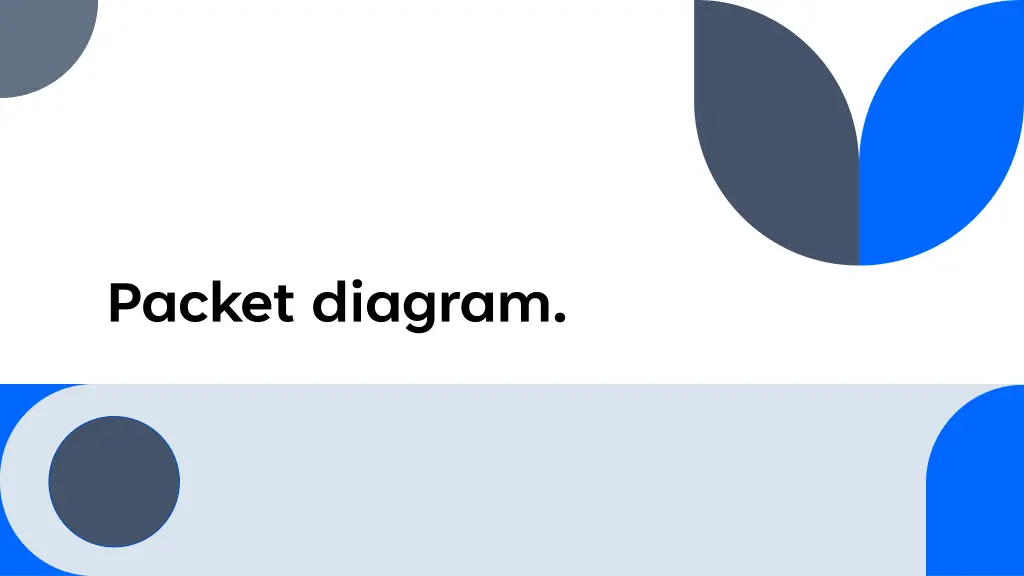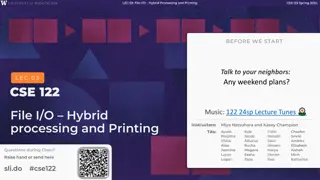
Understanding Package Diagrams in Software Development
Explore the purpose and basic concepts of package diagrams in software development. Learn how package diagrams help organize system elements, simplify class diagrams, and represent dependencies between modules. Discover the different notations used in package diagrams to enhance system design and structure.
Download Presentation

Please find below an Image/Link to download the presentation.
The content on the website is provided AS IS for your information and personal use only. It may not be sold, licensed, or shared on other websites without obtaining consent from the author. If you encounter any issues during the download, it is possible that the publisher has removed the file from their server.
You are allowed to download the files provided on this website for personal or commercial use, subject to the condition that they are used lawfully. All files are the property of their respective owners.
The content on the website is provided AS IS for your information and personal use only. It may not be sold, licensed, or shared on other websites without obtaining consent from the author.
E N D
Presentation Transcript
Package diagram Package diagram, a kind of structural diagram, shows the arrangement and organization of model elements in middle to large scale project. Package diagram can show both structure and dependencies between sub-systems or modules, showing different views of a system, for example, as multi-layered (aka multi- tiered) application - multi-layered application model.
Purpose of Package Diagrams 01 02 03 04 Package diagrams are used to structure high level system elements. Packages are used for organizing large system which contains diagrams, documents and other key deliverables. Package Diagram can be used to simplify complex class diagrams, it can group classes into packages. A package is a collection of logically related UML elements. Packages are depicted as file folders and can be used on any of the UML diagrams.
Package diagram is used to simplify complex class diagrams, you can group classes into packages. A package is a collection of logically related UML elements. Packages appear as rectangles with small tabs at the top. The package name is on the tab or inside the rectangle. The dotted arrows are dependencies. One package depends on another if changes in the other could possibly force changes in the first.
Basic Concepts of Package Diagram Package diagram follows hierarchal structure of nested packages. Atomic module for nested package are usually class diagrams. There are few constraints while using package diagrams, they are as follows. Package name should not be the same for a system, however classes inside different packages could have the same name. Packages can include whole diagrams, name of components alone or no components at all. Fully qualified name of a package has the following syntax.
Packages can be represented by the notations with some examples shown below:
Package Diagram - Dependency Notation There are two sub-types involved in dependency. They are <<import>> & <<access>>. Though there are two stereotypes users can use their own stereotype to represent the type of dependency between two packages.
Package Diagram Example - Import <<import>> - one package imports the functionality of other package
Package Diagram Example - Access <<access>> - one package requires help from functions of other package.
Modeling Complex Grouping A package diagram is often used to describe the hierarchical relationships (groupings) between packages and other packages or objects. A package represents a namespace.
Package Diagram Example - Order Subsystem
Package Diagram Example - Order Processing System We are going to design package diagram for "Track Order" scenario for an online shopping store. Track Order module is responsible for providing tracking information for the products ordered by customers. Customer types in the tracking serial number, Track Order modules refers the system and updates the current shipping status to the customer.
Identify the packages of the system There is a track order module, it has to talk with other module to know about the order details, let us call it "Order Details". Next after fetching Order Details it has to know about shipping details, let us call that as "Shipping".
Identify the dependencies in the System Track order should get order details from "Order Details" and "Order Details" has to know the tracking info given by the customer. Two modules are accessing each other which suffices <<access>> dual dependency
To know shipping information, "Shipping" can import "Track Order" to make the navigation easier.
Finally, Track Order dependency to UI Framework is also mapped which completes our Package Diagram for Order Processing subsystem.



![Lec [2] Health promotion](/thumb/274962/lec-2-health-promotion-powerpoint-ppt-presentation.jpg)
